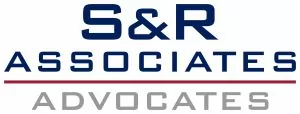Introduction
Increased use of artificial intelligence ("AI") systems, including for the purpose of developing new technologies and inventions, has brought forth several questions regarding the protection and enforcement of such inventions. Given that existing patent regimes are primarily designed to reward and incentivize "human" innovation, such regimes may need to be revisited and/or modified to additionally provide for the protection of AI-generated inventions.
Defining AI-Generated Inventions
As a first step towards developing a framework for the protection and enforcement of inventions that are generated primarily by AI systems, the criteria for determining the scope of AI-generated inventions will need to be defined.
Broadly, the term "AI-generated inventions" refers to inventions created by AI systems autonomously, or without any meaningful human intervention. These may be distinguished from "AI-assisted inventions," i.e., inventions which are developed using AI as a tool or in an incidental manner, where the primary contribution is from the human inventor(s). In the latter case, the role of AI could be likened to the role of traditional computer programs (e.g., computer-assisted design (CAD) software).
However, it may be important to formulate guidance around the threshold of human involvement that would distinguish AI-generated inventions from AI-assisted equivalents. Some factors that may be relevant in this context include the following:
- Determining the materiality of human contribution in terms of quality, skill and quantity;
- The impact of human contribution on the AI output, e., on the invention itself;
- The degree of predictability and control exercised by humans over the AI output;
- The intellectual labor involved in the human contribution (g., in terms of setting the problem, as well as the application of prior knowledge and technical expertise).
Examples
Dr. John Koza's work in the field of genetic programming, hailed as "the invention machine," was used to create a novel type of space antenna for the Space Technology 5 Mission in 2006 as part of the 'New Millennium Program' of the National Aeronautics and Space Administration ("NASA").
Inspired by Dr. Koza's work, computer scientists at NASA provided genetic programming software with the essential requirements for such space antenna. Pursuant to such programming, the software subsequently produced a unique 'bent-paperclip'-like (or crooked wire) design, which was contrary to conventional antenna models, but proved to be the most efficient design for the mission. Dr. Koza's work has also been used to invent novel lens systems for telescopes and binoculars.
Further, Dr. Stephen Thaler has created an AI system called the Device for the Autonomous Bootstrapping of Unified Sentience ("DABUS"). DABUS has created two inventions: (i) a food and drink container, with a novel design that inter alia improves storage and handling; and (ii) an emergency light beacon with a novel flash pattern to improve detectability in search and rescue operations.
Like with Dr. Koza's genetic programming systems, upon being provided with information on (1) food and beverage containers, and (2) emergency light beacons, respectively, DABUS went on to develop the inventions claimed in Dr. Thaler's patent applications.
Inventorship
Patent laws in most jurisdictions either expressly or implicitly contemplate an "inventor" to mean a natural person or group of natural persons who are responsible for the invention. For instance, the Indian Patents Act, 1970 (the "Patents Act") provides that a person claiming to be the true and first inventor is entitled to apply for the grant of a patent and is required to be named in the patent application. While the term "person" as used in Section 6 of the Patents Act includes juristic persons/ body corporates – in the context of "inventorship" specifically Indian courts have observed that a firm or a corporation cannot be said to have the capacity to invent.
Criteria relating to the nature or extent of contribution required for a person to qualify as an inventor with respect to an invention have evolved primarily through judicial interpretation across jurisdictions. Generally, a person who has contributed to the conception of the invention – specifically, the inventive concept – is considered to be the inventor. While the Patents Act does not specify the requirements that need to be fulfilled to establish inventorship, observations made by Indian courts/tribunals in certain cases suggest that, to qualify as an inventor, the person in question should have contributed technical skill, knowledge and ingenuity in the process of conception with respect to that invention.
Current legal requirements related to inventorship pose a challenge in the context of naming an inventor in a patent application for AI-generated inventions. This is apparent from Dr. Thaler's failed attempts in several jurisdictions to secure patent protection for inventions created by DABUS (pursuant to applications which named DABUS as the inventor) – including in the US, Australia, the United Kingdom and the European Union. In India, the application filed by Dr. Thaler is currently pending, although an objection has been raised by the Controller of Patents with respect to the grant of a patent on certain grounds – including on account of the fact that the inventor mentioned in the application (i.e., DABUS) is not a 'person' as per the requirements of the Patents Act.
With respect to addressing this issue under the existing limitations of patent regimes, legislators and policymakers may want to consider options such as –
- Amending patent laws to allow AI systems to be named as inventors.
- Allowing the human beings involved in:
- developing the AI system, and/or
- providing inputs that resulted in the invention, to be named as "inventors" – while separately setting out the AI system's contribution with respect to such invention.
- Eliminating the requirement of naming an inventor with respect to AI-generated inventions.
Ownership
Under current patent regimes across the world, including in India, the ownership of a patentable invention generally vests with (i) the inventor, or (ii) an entity/individual that acquires an assignment of rights in the invention from such inventor. This position will also need to be re-examined and adjusted, as necessary, in the context of AI-generated inventions.
In this case, the question of ownership is further complicated by the fact that multiple stakeholders may be involved in the process of developing such AI-generated inventions – i.e., (i) the creators/developers of the AI system, (ii) the owners of the AI software and/or the machine/hardware on which it is operated, (iii) the individuals responsible for training the AI systems, as well as (iv) the users of the AI systems i.e. individuals responsible for operating the AI who presented the problem/ provided the inputs that lead to the development of the invention.
At the core of any AI system is a software program (or a collection of software programs). Intellectual property ("IP") ownership rights over such software are generally held by the programmer of such software or their employers, customers or assignees – depending, among other things, on the arrangement pursuant to which such software is developed. However, such ownership should not automatically extend to the output of such an AI system – given that an AI-generated invention is often not (i) the end-goal of the software, or even (ii) within the conception of the software programmer.
Take, for example, the situation of DABUS, which was not created with the explicit purpose of creating a food storage container or an emergency light beacon. In fact, its creator did not necessarily have the domain expertise to create such inventions. That said, in the case of inventions created by DABUS, the creator of the software program and the individual that seeks a solution from the AI system are one and the same, which may make it easier to ascribe ownership rights to the owner and creator of the software.
However, a situation may arise where an individual or entity that is unconnected with the creation of the underlying AI software uses such software to conceive of a novel process or product. Arguably, in such a situation, the owner of the software should not be entitled to the ownership of the invention, given that they have not played a role in the framing of the problem and/or the training of the AI system which may have directly resulted in the development of the invention. Therefore, a legal regime that seeks to protect AI-generated inventions would need to set out guidelines around ownership, including by taking into account the contribution and investment made by various stakeholders.
Revisiting other aspects of patent law
Apart for ownership and inventorship, certain other requirements and conditions relating to the grant of patents may need to be reconsidered in the context of AI-generated inventions, such as the following:
Patentability criteria
Across jurisdictions, the three main criteria that need to be fulfilled for the grant of patents are as follows:
The invention must be:
- Novel;
- Non-obvious; and
- Capable of industrial application.
While different jurisdictions have specific guidelines/criteria to test the satisfaction of such criteria, one of the fundamental questions that needs to be addressed in the context of assessing an inventive step is whether the invention in question would have been obvious to a "person skilled in the art".
However, any invention made using the massive computational power of AI – which allows for searches and permutations based on trial-and-error without significant or undue experimentation –may, in most instances, be non-obvious to a person skilled in the art, who relies primarily on mental capabilities and existing knowledge in the relevant field.
Similarly, the ambit of prior art that an AI system is able to access may far exceed the equivalent which a person skilled in the art can realistically find accessible, given that an AI system may not be restricted by prior art in the relevant field of the invention.
In view of such concerns, applying the current test of non-obviousness to AI-generated inventions may render most such inventions as non-obvious – thus leading to 'patent thickets' (i.e., a complex network of overlapping patent rights), which businesses will need to navigate in the future for the purpose of commercializing new technologies – which might, in turn, stifle innovation.
Accordingly, the tests and criteria relating to non-obviousness would need to be significantly modified for the purpose of addressing this issue. For instance, the non-obviousness of AI-generated inventions may need to be evaluated from the perspective of a person skilled in the art who has access to equivalent AI systems and tools. Further, these principles may need to be (i) kept deliberately dynamic, and (ii) continuously adapted, including for the purpose of addressing future use-cases and applications involving AI systems.
Requirements related to enablement and disclosure
In most jurisdictions, including in India, the grant of a patent is subject to certain disclosure and enablement requirements, i.e., the patent specification should disclose the invention with sufficient explanation and detail, such that a person skilled in the art is able to carry out or perform the invention without the burden of (i) undue experimentation, or (ii) application of inventive ingenuity. A related requirement is the disclosure of the best method of performing or working the invention known to the applicant.
However, due to the "black-box problem" commonly associated with AI systems – i.e., the lack of transparency and interpretability of AI algorithms, which makes it difficult to understand how an AI system arrives at its conclusions or predictions – meeting these specific enablement and disclosure requirements may be a challenge. It would therefore be necessary to recalibrate the disclosure requirements related to the grant of patents for AI-generated inventions. For example, such recalibrated requirements could include the disclosure of details related to the training data and processes, inputs and instructions, system integration requirements, as well as any observed correlations between inputs and outputs.
Term of patent protection
In most jurisdictions, patent protection extends to a term of 20 years (in case of human inventions). It may be worth considering if the same term should be extended to AI-generated inventions as well. Among other things, the impact and potential consequences of such term of protection may need to be assessed in light of new information and future developments, including with respect to accessing innovation and technological growth. Reducing the duration of protection may be advisable in some cases, subject to additional concerns and priorities, including for the purpose of balancing the rights of the patentee with the need to make technological advances widely available.
Conclusion
It appears that there is growing acknowledgement of the fact that technology has now arrived at a point where an AI system can play a determinative role in the inventive process, and therefore, may significantly accelerate technological development. Accordingly, the question of granting and protecting IP rights of AI-generated inventions assumes significant importance, including in terms of incentivizing possible innovations related to, and investments into, generative AI systems. A failure to meaningfully protect such inventions from the perspective of IP rights may negatively impact humanity's trajectory with respect to leveraging AI responsibly, and more important, for the benefit of all. This failure, in turn, may impede progress in other fields and disciplines.
However, as discussed in this note, patent laws around the world may not yet be ready to extend the concept of inventorship to AI, including with respect to inventions which have been created without, or with minimal, human involvement. Accordingly, there is a pressing need to address the questions raised in this note, some of which cut across diverse disciplines – such as law, policy, science, and technology. It remains to be seen whether these questions and their allied issues are capable of being resolved within the framework of existing patent regimes, or whether it becomes necessary to devise a separate, standalone and/or sui generis regime of IP protection that specifically deals with AI-generated inventions.
This insight/article is intended only as a general discussion of issues and is not intended for any solicitation of work. It should not be regarded as legal advice and no legal or business decision should be based on its content.




